Close Reading the Art of… posts offer a lesson plan designed around free Internet resources. Each lesson involves a close reading of characteristic works by individual artists or a group of artists. Through these profiles students analyze individual works of art, engage in small-group conversations, read reviews, and explore larger issues that may inform their own art appreciation and art making.
This post explores the art of The Art Guys (Michael Galbreth and Jack Massing), two conceptual artists who bring their art to the public with such good humor, energy, and personal commitment that “viewers” enjoy the opportunity to engage with their ideas. While seemingly whimsical, their performances or “behavioral interventions” oftentimes explore serious issues and social mores. Is this art “sophomoric posturing” as some critics contend or, is it as others believe, “significant art”? These are never bad questions to ask of our own art making (and questions The Art Guys ask themselves as they work), but they can be especially poignant for young artists trying to find their own voice.
This lesson builds on the expanding-conversation framework established in this site’s guiding principles.
As always, we begin with the art. Read the captions and quotes aloud as students analyze the images. Use the Wonder Aloud suggestions below to call attention to key details and begin to make associations.
In SUITS: The Clothes Make the Man, The Art Guys leased advertising space on specially tailored business suits designed for them by Todd Oldham. Beginning in July of 1998, they wore these suits for a year throughout the United States, advertising for their “clients.” (62 embroidered logos, 56 different companies)
We’re not selling out, we’re selling. What we deliver with the suits is extremely high-end marketing….When I was a kid I had a jean jacket that I put a lot of patches on, and I thought that was pretty cool, so I was celebrating the fact that I was collecting these patches…When you think of the NASCAR drivers or bass fisherman, they’re just covered with that stuff, and its cool. It’s cool to be a bass fisherman and have all those patches on. I see it as a celebration.
—Jack Massing, from an interview with Robert Philpot, The Fort Worth Star Telegram
In their performance Intersection, The Art Guys spent eight hours crossing Houston’s busiest intersection. The artists said they weren’t trying to change Houston, but to understand it for what it is—battered, brutish and built.
This is more or less a landscape piece, just marking it, observing it, seeing it, experiencing it just by being here all day. Taking advantage of the crosswalks and using them, just going around and around and around in a circle. That’s really all it is. We began at 9:00 in the southeast corner, walking in a clockwise fashion. Then at 1:00, at the halfway point, about four hours in we started in a counter clockwise fashion. Certainly we have become aware of the flow of the place. We have gotten into the rhythm of the timing of the lights. This is probably a very very typical day.
—Jack Massing and Michael Galbreth, from a radio interview with Troy Schulze
In The Art Guys Marry a Plant, The Art Guys married an oak sapling. The piece was intended to explore man’s relationship to nature.
The Art Guys Marry A Plant is not about gay marriage. If we say this event is not about the politics of gay marriage, nothing we say or do will convince anyone that this is the case if they choose to think otherwise. The facts are right there to observe under broad daylight and described succinctly in the title The Art Guys Marry A Plant. It is not about gay rights. It is not about rights of any kind. And as we have said, it’s not “about” anything. It is (as they say) what it is….We, The Art Guys (capital “T,” by the way) do what we do regardless of what people think or how they think. And for the most part, we do it right in front of people so that they may share and experience and judge for themselves. There are other ways of working. This is what we often do.
— Michael Galbreth, excerpted from an open letter responding to Douglas Britt.
Why this art? The Art Guys have created hundreds of works so it was difficult to narrow it to these three, but it is important for close reading to narrow the focus so you have time for in-depth analysis and conversation. These works are ripe for comparison, sharing a characteristic sensibility, but also each exhibiting a unique approach and focus. These pieces were also selected because of their special relevance for adolescence. The Art Guys’ use of mass and social media and their accessible, offbeat approach should have broad appeal for young students inclined to challenging the status quo. The valuing and wearing of logos in SUITS taps into popular fashion. With their expanding worldview and interest in all things driving-related, adolescents may bring a fresh perspective to Intersection. Marry a Plant’s intended exploration and unintended reception by some, touches on a number of relevant issues, including having your intentions be misunderstood.
Cross-curricular connections
Writing: This lesson could be used for a unit on opinion writing and literary argument writing.
English Language Arts: This analysis could be used to help students cite evidence, determine a central idea, and analyze details.
Social Studies: These works could also add to social studies classes exploring topics such as commercialization, urban development, and environmental stewardship.
Step 1: Wonder aloud as you view the art: As you read the captions and quotes, wonder aloud and model your own inner conversation when viewing a work of art. Don’t stop for a full class discussion, but allow students to add to the flow of your wondering.
SUITS: Those are good looking suits, the cloth and the cut, but the logos catch you by surprise. But are they really that different than what we see all the time? Beyond NASCAR drivers and competitive bass fishermen, what other occupations wear logos and patches with pride? (almost all sports stars, firemen, policemen, soldiers–some celebrities such as Tom Brady and Tiger Woods have their own logos) How many prominent logos are you wearing today? Where else do we “wear a lot of logos? (cars, food, movies, television shows) Why do you like to wear logos? Does the logo’s brand extend to the wearer?
Intersection: Intersection is a title with multiple meanings. Of course there is the literal reference to the intersection of the roads. What other intersections are occurring here? (As the busiest intersection in Houston consider all the different types of vehicles, people, occupations, infrastructure that momentarily interact at this one point. Consider how those interactions require coordination and cooperation to keep everything from colliding.) Why 8 hours? Why start at 9 and end at 5? (Typical workday) Why walk in one direction for four hours and then reverse direction for the next four hours? (it emphasizes flow, rhythm, cycle) What other cycles follow this pattern? (commuters; while longer in duration, the tides, the rising and setting of the sun)
The Art Guys Marry a Plant: What is the significance of a wedding ceremony? (participants take a moment to officially recognize a life-giving relationship; an opportunity to recommit to a relationship) Like most of their work, this is a spare piece where every detail matters. Why say you are marrying a plant as opposed to a tree, or more specifically, an oak sapling? (the broader terminology encourages a broader interpretation) What is the significance of choosing a tree, as opposed to a potted plant? (a living plant is important and trees have social significance such as they create oxygen, shade, and habitat to name a few) Why make this a public ceremony? With single-sex marriage being such a hot topic, is it understandable for a viewer to make the leap that this touches on that issue? Is the artist responsible for guarding against misunderstanding?
Step 2: Have students quickly turn and talk with a partner. Have students quickly share something they like or something that surprises them about the work. (I like how their art makes me see and think about everyday things such as logos, intersections, and plants in a new light. Now when I see these things I think about their art.) What are some common elements that tie the three pieces together? (the artists follow a carefully-crafted concept to its conclusion; interact directly with the general public; use mass media to exhibit their art; they are their medium) What questions do you have about the work? Have a few groups quickly share their thinking.
Step 3: Open up the conversation with two TV news clips. Let students know that critics have split opinions on The Art Guys’ work. Some think this is serious art while others think this is a spoof on the art world. As a way to sensitize students to these opinions, have students keep a two column list as they watch. Title the left column “sophomoric posturing” and title the right column “significant art.” Use this graphic organizer to categorize the words, phrases, art, and ideas that they encounter.
- an interview on Houston PBS Art Insight (6:36)
- an interview with Bill Giest of CBS News Sunday Morning (7:09)
After watching, create a two-column anchor chart that organizes your class discussion and distills the students’ responses.
Step 4: Open the conversation to two art critics with drastically different opinions. Now that the artists have been introduced and some foundational ideas are taking shape, read the following short critiques on The Art Guys. These two art critics, writing at about the same time, come down on either side of your anchor chart. Use the chart to unpack their arguments. Be especially careful to compare their descriptions of the same topics. For example, one critic says democratric and accessible while the other says low brow and common. One critic’s absurdity is the other’s dimwitted.
- “Stupid Is As Stupid Does: The Art Guys prove naturals at acting dumb” by Susie Kalil (Houston Press, June 15, 1995)
- “At Work With The Art Guys; In Performance: Life Imitates Art Imitating Life” by Sam How Verhovek (The New York Times, August 9, 1995)
The closing arguments in each essay are quite strong. Have a student read out loud, and with conviction, the final paragraphs.
If the students were a jury, would they convict The Art Guys of being artists? Divide students on either side of the argument. Have groups quickly organize their strongest arguments and report back their findings. (Possible response: The Art Guys are not only making art, they are especially daring artists. The don’t exhibit in the safe confines of a gallery where only the initiated will view their art, instead they personally interact with the general public and open themselves up to direct and immediate feedback. They don’t hide behind a lot of art speak, adopting instead a “it is what it is” mantra. They are willing to play the fool and be absurd to create a serious piece, with the full knowledge that the viewer may not get beyond the absurd. They are their medium, working in the sight line of the viewer. Their art, while spare on the surface level, is rich with interpretation, welcoming the viewer to co-create with them. Their art makes the viewer see the world in a new light and it causes us to notice and reflect on aspects of our world that are so common that they are oftentimes ignored.)
Step 5: Summarize the ideas discussed and ask students to consider how these insights may inform their art appreciation or art making. How has your thinking about this art evolved since you first looked at their work?
If the students want to explore further
- For more contemporary interviews (including radio interviews) and articles click on the titles on this site.
- Close read a fourth piece and discuss how it echoes the artistic sensibility of the works above. Consider this video profile of their phone in sculpture (1:18)
- For two news articles about two different performances linked by a common behavior—commuting—have students read “Understanding Houston is going in circles” (Driving a busy commuter route for 24 hours) and “The Art Guys traverse a concrete canvas” (Walking a busy intersection for 8 hours)
Thanks for your interest in our work. We’re pleased, honored, and touched that you chose to highlight our work in your “Close Reading of…” series.
Of all of our hundreds, if not thousands of works from more than 30 years of work, you chose pretty good ones.
I like the thoughtful consideration you’ve given each work as exemplified in your suggested questions. Despite appearances, quite a bit of thought and decision making goes into everything we do. Many of our works are “spare” and each detail does indeed matter. As you know, we have chosen, in many of our works, to present them outside of what is thought of as traditional art venues – museums, galleries, etc. That is, we often do things “out in the street,” both literally and figuratively, engaging the public directly coupled with as much outreach through the media as possible. There are reasons for this and I still believe in this approach. It can be risky doing so. While much has been written or documented about us, so much of it is off the mark from our perspective, although sometimes the blame is ours. The media is the medium too, and we experiment with it like any other. Of the three you have chosen, The Art Guys Marry A Plant proved to be stranger, more extraordinary than we ever anticipated. That one would make for a good doctoral dissertation.
There is some consistency with our work over the years, but compared to even ten years ago, I don’t think of it in the same way at all. That’s because I don’t think the same way as I used to. If I did, it seems to me that I (we) would have been wasting a lot of time.
Best regards,
Michael Galbreth
This lesson plan will continue to evolve so feel free to add your suggestions on how to improve. Also, feel free to suggest other artists and art works to closely read.

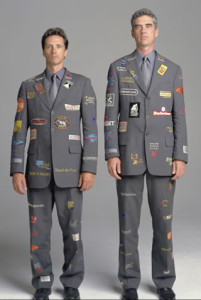
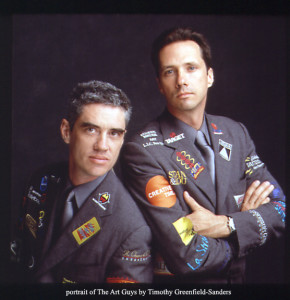

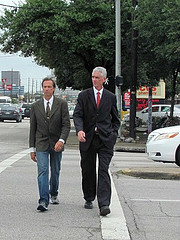
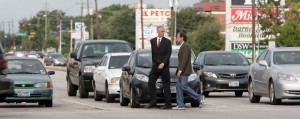
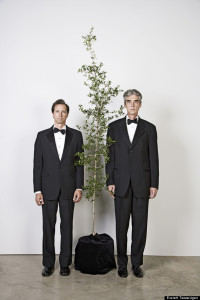

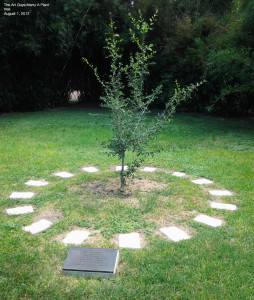
Comments are closed, but trackbacks and pingbacks are open.